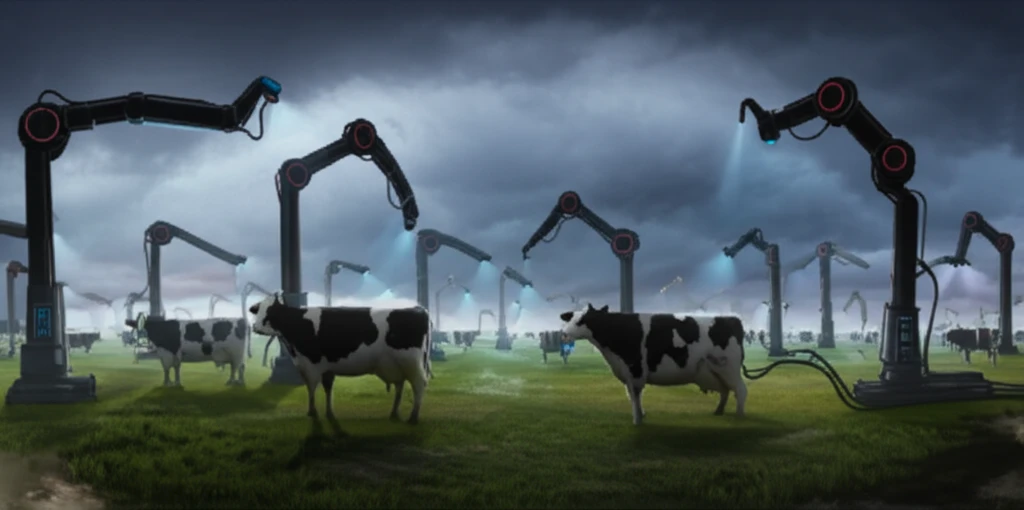
Milking More Than Profits? Unveiling the Truth Behind Mega Dairy Farms
"A Deep Dive into Management, Health, and Economics in the Upper Midwest"
The American dairy landscape is undergoing a massive transformation. Small family farms are dwindling, while mega-dairies housing thousands of cows are becoming increasingly common. While these large operations promise efficiency and scale, questions linger about their impact on animal welfare, operational sustainability, and overall profitability. Are these mega-dairies truly the future of milk production, or are there hidden costs lurking beneath the surface?
A recent study in the Upper Midwest, the heartland of American dairy farming, sheds light on the inner workings of these massive operations. Researchers investigated 15 dairy farms, each housing over 2,500 cows, across Minnesota, Wisconsin, Iowa, and South Dakota. The goal? To understand their management practices, labor structures, animal health challenges, and economic realities.
This article dives into the study's key findings, revealing the surprising realities of life on a mega-dairy. We'll explore everything from lameness and mastitis rates to employee management and the true cost of producing a gallon of milk. Get ready to uncover the truth behind the mega-dairy boom and what it means for the future of your dairy products.
Mega-Dairy Realities: Beyond the Moo

The study paints a complex picture of mega-dairy operations, highlighting both potential benefits and significant challenges. While these farms boast impressive milk production numbers, they also grapple with unique animal health concerns and economic pressures. Here’s a breakdown of the key findings:
- Lameness: Median lameness prevalence was 18.3%, with 5.1% classified as severely lame.
- Hock Lesions: Median hock lesion prevalence was 17.4%, but severe lesions were less common at 1.9%.
- Mortality: The average mortality rate was 7.4%.
- Mastitis: Clinical mastitis incidence averaged 62.5 cases per 100 cow-years.
The Future of Dairy: Balancing Profits and Practices
This study provides a valuable snapshot of mega-dairy operations in the Upper Midwest, highlighting the complexities of balancing economic viability with animal welfare and responsible management. While these farms can achieve impressive production levels, they must also address the challenges of maintaining animal health, managing labor, and navigating volatile commodity markets.
As the dairy industry continues to evolve, it's crucial to consider the long-term sustainability of these mega-dairies. This includes investing in employee training, improving animal welfare practices, and exploring innovative solutions to reduce environmental impact.
Ultimately, the future of dairy farming depends on finding a balance between profitability and responsible practices. By prioritizing animal health, supporting workers, and embracing sustainable solutions, the industry can ensure a secure and ethical future for milk production in the United States.
